Tokyo Institute of Technology’s Third TECH Cooking Studio Uncovers Secrets of Traditional New Year’s Soup Dish
The TECH Cooking Studio event was held for the third time at Hisao & Hiroko Taki Plaza (Taki Plaza) on Ookayama Campus on December 13. Joining in the fun to learn about ozoni, a Japanese soup dish traditionally enjoyed around the New Year holidays, were Japanese and international students from over 10 countries and regions. Leading the lecture and preparation of the versatile broth was Hiroko Kasuya, a true ozoni enthusiast and researcher.
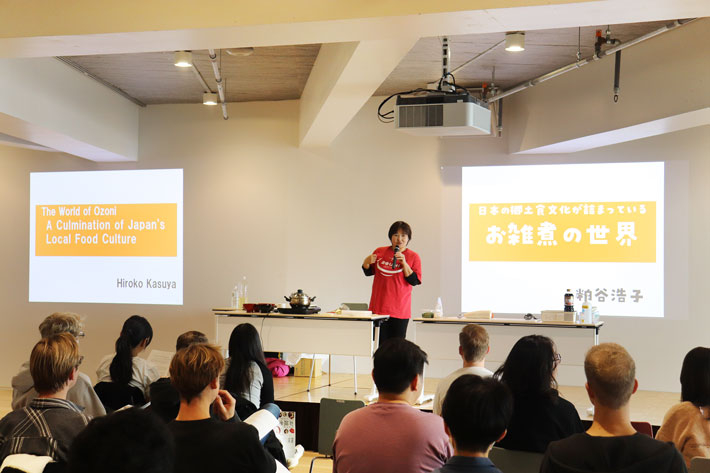
Ozoni expert Kasuya lecturing on Japanese food culture
This event was again held as part of the Student Success Support Project, an initiative supported by Gurunavi Inc. Chairman and Director Hisao Taki, a Tokyo Tech alumnus. As in previous years, the event was co-organized by the Student Support Center’s Student Success Support Section, the Student Support Division’s Support Planning Group, and the Tokyo Tech Alumni Association.
Part One: Lecture on ozoni from various regions of Japan and cooking demonstration
Part One of TECH Cooking Studio focused on learning about different types of ozoni from expert Kasuya. This component of the event was moderated in English and Japanese by student organizers Risako Yanagase and Teru Hashimoto, both of whom are 1st-year master’s students.
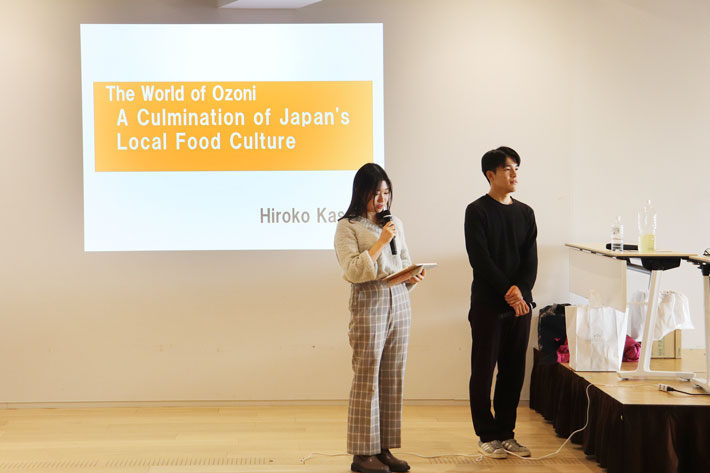
Student moderators Yanagase (left) and Hashimoto
During her lecture, Kasuya spoke about ozoni soup stock and ingredients used in various regions of Japan, and explained the origins of the ingredients used in the dish. She also talked about the rough geographical line where the shape of the mochi rice cake changes from round in western Japan to square-shaped in the east. Kasuya herself noticed this interesting regional difference after moving around Japan every year or two to study ozoni.
The presentation materials provided by Kasuya were translated into English by student organizers and projected onto a screen so that non-Japanese speaking participants could follow the talk more easily. Simultaneous interpretation was provided by Miki Miki, a student life coach at the Student Support Center’s Student Success Support Section, helping to clarify unfamiliar words and nuances unique to the Japanese language.
After the lecture, Kasuya demonstrated ways to cut soup ingredients in different regions, and touched on some beliefs related to these cutting methods. For example, slicing ingredients into a circular shape is believed to bring family happiness and allow things to settle down in a roundabout way.
Two lucky participants also got to try a sweet ozoni made with white miso paste, which is unique to the Kansai region, including Kasuya’s home of Kagawa Prefecture. As Kasuya prepared the delicacy, many participants saw anko mochi — rice cake filled with sweet bean paste — for the first time.
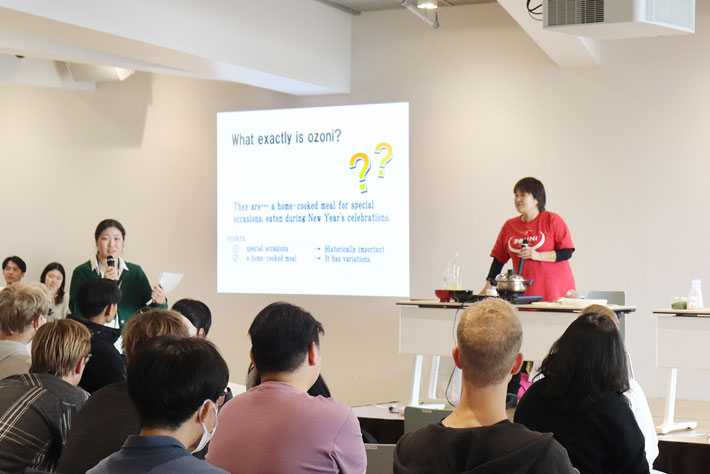
Kasuya demonstrating ways to cut ingredients
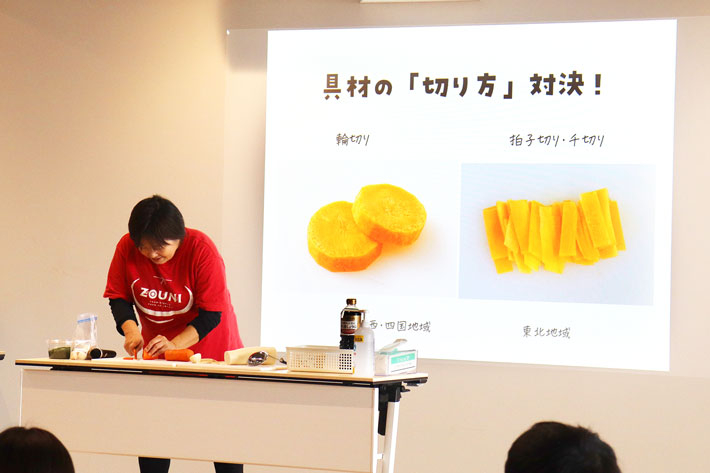
Student life coach Miki (left) interpreting Kasuya’s talk
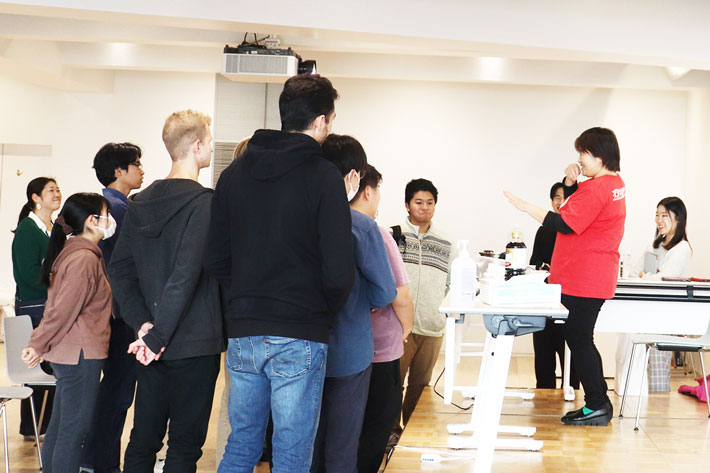
Participants learning about mochi rice cake
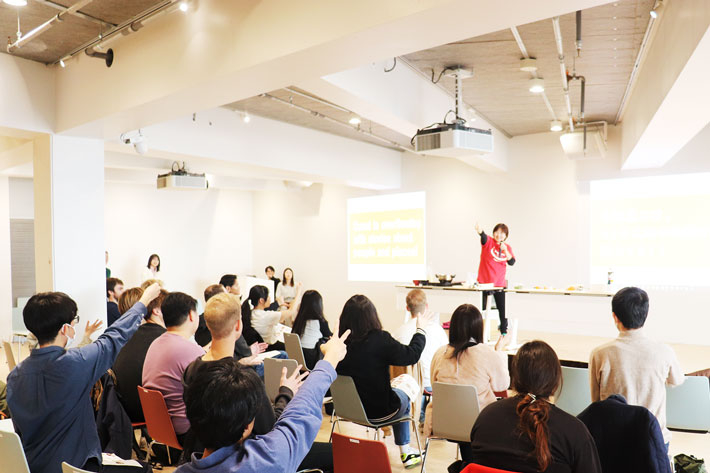
Rock-paper-scissors to determine two lucky tasters
Part Two: Tasting event at second cafeteria
For Part Two of TECH Cooking Studio, the participants moved to the Second Cafeteria on Ookayama Campus where they were invited to taste ozoni common in the Kanto region. This event was held in cooperation with the University Co-op. The traditional soup, which contained freshly cooked rice cake topped with Japanese mustard spinach, carrot, and fish paste prepared in advance, was so popular among the international students that there was a constant line of people waiting for a second helping. One of the students tasting the white miso ozoni from Kansai said that it was similar to a sweet chicken soup served in Indonesia. While enjoying their food, the participants creating a memorable time together by sharing culinary traditions from their home countries and regions.
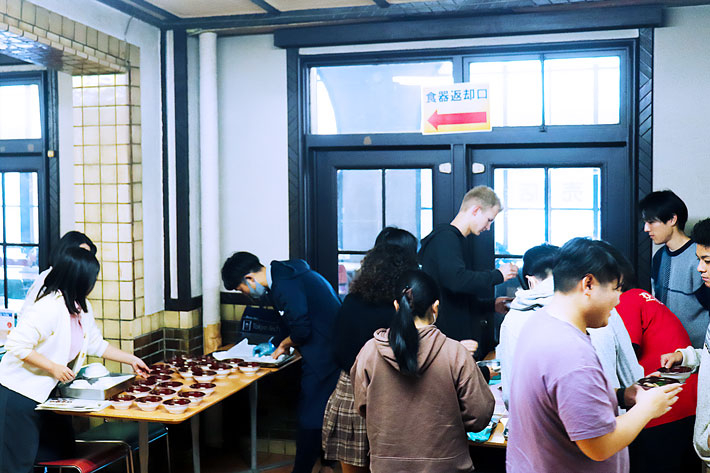
Participants tasting ozoni from Kanto region
As ozoni is traditionally a homemade New Year’s dish, international students rarely have the opportunity to try it. Japanese students seldom eat it outside their family homes. This event offered a great chance for all students to not only try this Japanese New Year dish, but also learn about the culinary characteristics and tastes of various regions in the country.

